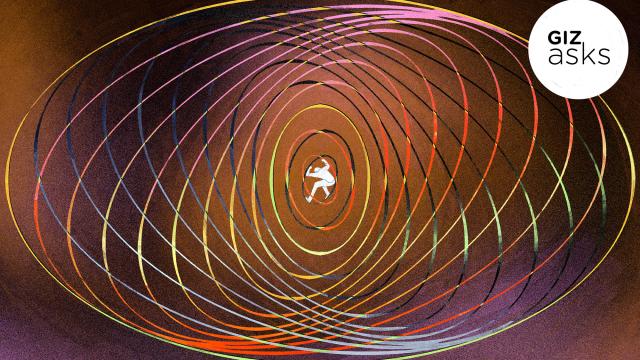For decades, every town had its spin on the story: the distant cousin or friend of a friend who took a bunch of acid and never came down from their trip. Rumour had it that many of these people were consigned to state asylums, unshakably convinced that they’d morphed into tall, precariously balanced glasses of orange juice—at least, that was the one that I heard. The dreaded “permatrip”: an urban legend sourced equally in Just Say No paranoia and teenage idiocy/credulousness.
Still, for those who bought the story at a young-enough age, the fear of it can be hard to shake—there is something primally terrifying about the idea of a quarter-inch piece of paper permanently warping, or wiping, your mind. As so—just to be absolutely sure—for this week’s The Psychedelic Explorer’s Guide, among other books
Permatripping, as far as we know does not exist—period.
People who have taken high doses and had an extremely bad experience (or more likely very bad treatment for a bad experience) will for some months feel mentally upset and disturbed, just as they would for any other trauma, like a sexual assault or a kidnapping. But LSD and other psychedelics leave the brain after a few hours, and as far as we we know from the research we’ve done, they do not leave residues. They do lead to changes in behaviour and attitude over time—which you could probably call learning—but there’s no staying in the tripping state.
There were experiments done by Leary and Alpert in the 1960s where they tried to stay in a permatripping state by taking more and more LSD each day, upping the dose as necessary. The fact that this experiment failed suggests that even overdosing on a daily basis does not lead to permatripping. Psychedelics are actually anti-addictive: when you take a psychedelic, it will have an effect; if you take the same amount the next day, it has much less effect; and on the third day, if you try again, it has no effect at all. So it’s self-cancelling, physiologically: the system simply rejects the effects of whatever they psychedelic may be.
At least 26 million Americans have taken LSD since the drug was listed in schedule I in the late ‘60s. If permastrippoing existed, we would’ve noticed it by now.
Albert Garcia
Instructor and Research Associate, Psychiatry and Behavioural Sciences, John Hopkins School of Medicine, who studies the effects of psychedelics in humans, with a focus on psilocybin as an aid in the treatment of addiction
As far as I know, “permatripping” is an urban legend. There are psychiatric conditions like catatonia and psychotic disorders that can be chronic and persist across the lifespan, and there is evidence that in some rare cases these types of conditions can be triggered or exacerbated by hallucinogen use. Typically this is believed to occur in individuals who may have a personal history or genetic predisposition to these conditions. Symptoms of a psychotic disorder such as schizophrenia could include delusions (believing things that are untrue, and often unusual, for instance that people are plotting against you or that you have special powers), hallucinations (seeing, or more commonly hearing, things that are imperceptible to others), and disorganized speech, or behaviour, which may seem incoherent to others, interfere with communication and functioning, and can be linked to the aforementioned delusions and/or hallucinations.
Catatonia, which can occur in conjunction with or separate from psychotic disorders, can involve a number of symptoms such as stupor, immobility, and grimacing. These types of symptoms tend to occur as part of brain disorders, but can also be associated with extreme trauma, traumatic brain injury, and in some instances have been observed to happen after hallucinogen use.
Other drugs such as cocaine, amphetamines, and cannabis have also been linked to onset of psychotic symptoms, so hallucinogens like LSD and psilocybin are not alone in this regard. There are other potential hallucinogen-related conditions such as hallucinogen persisting perception disorder (HPPD) that can occur after hallucinogen use, and could involve ongoing perceptual disturbances like seeing auras or halos around bright lights, or re-experiencing of hallucinogen-like effects months or years after taking the drug (sometimes called ‘flashbacks’). This could cause distress or impairment in daily function, but does not seem to be highly prevalent or problematic among the majority of people who have used hallucinogens, and this is very rarely reported after controlled administration in medical settings.
